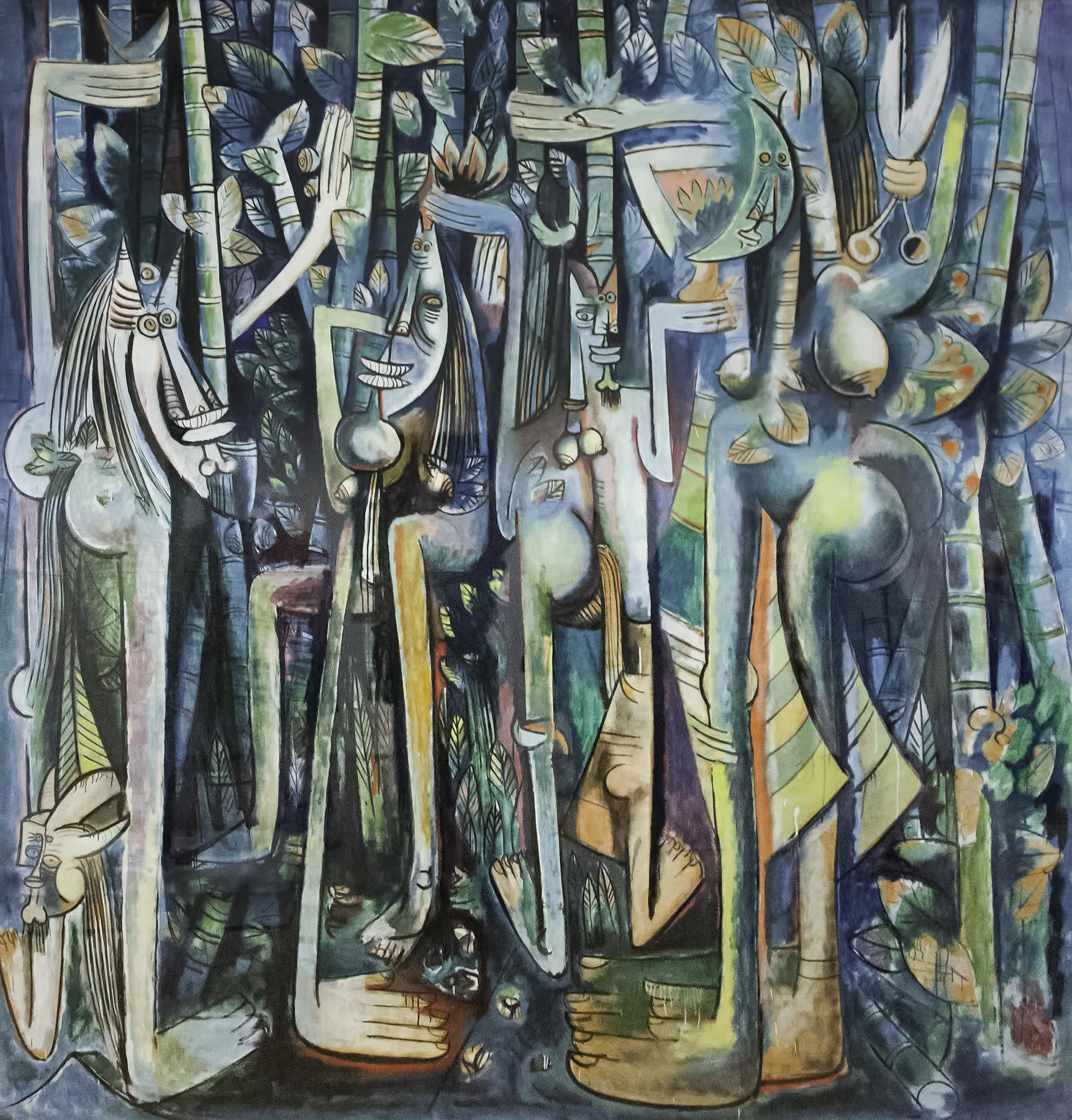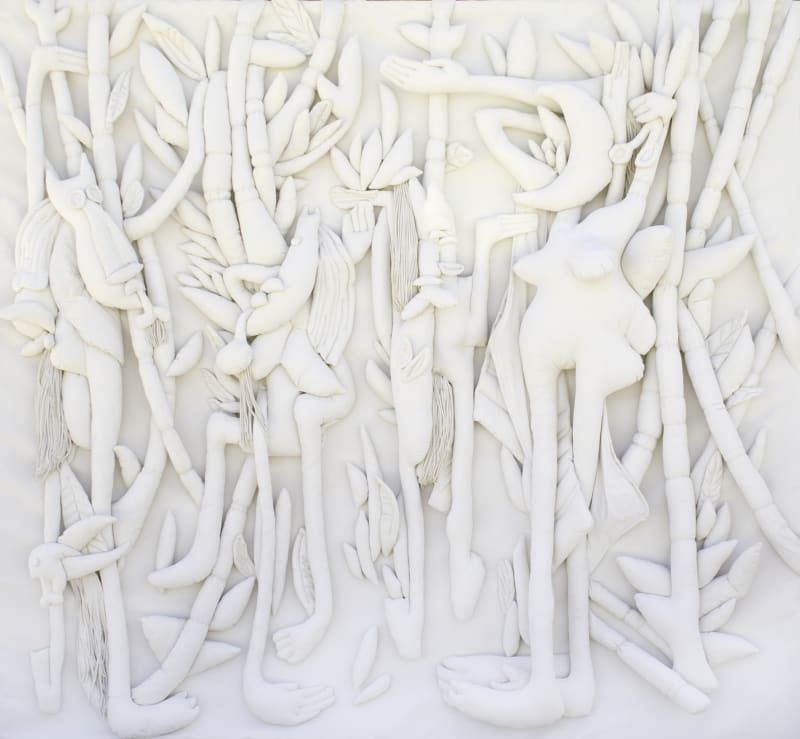Elio Rodríguez is a contemporary Cuban artist known for his hybrid sculptures that blend fabric, textile, and soft materials with painterly strategies. He graduated from the San Alejandro Academy (1984) and the Instituto Superior de Arte in Havana (1989) and has participated in numerous international residencies at institutions such as the Hutchins Center at Harvard, the Mattress Factory in Pittsburgh, and El Museo Francisco Oller y Diego Rivera in Buffalo. His works are represented in prominent collections including the National Museum of Fine Arts (Havana), the W.E.B. Du Bois Institute at Harvard, and others across Latin America and Europe.
Within the Watch Hill Collection, Rodríguez’s La Jungla (The Jungle) (1991/2008) is installed as a soft sculpture on canvas, measuring 238 × 248 cm. It is a three-dimensional artwork mimicing the composition of Wifredo Lam's La Jungla (1942-1943).
This work signals a critical dialogue with pictorial conventions and with previous works: by materializing the “jungle” in soft, textural form, Rodríguez invokes tropics, displacement, memory, and syncretism in three dimensions rather than strict pictorial illusion. He builds on the layered themes of Lam's original work, while intorducing new layers of meaning. To understand Rodríguez's jungle, we must first Lams's.

Wifredo Lam, La jungla (The Jungle) (1942–43)
Wifredo Lam’s La Jungla (also The Jungle, 1942–1943) stands as one of his most iconic paintings and a foundational moment in 20th‑century Afro‑Cuban modernism. Executed during his return to Cuba, this work fuses Surrealist structure, Cubist fragmentation, and Afro‑Caribbean spiritual iconography in a dense, baroque visual field. In itself, it spekas to a number of movements and styles, creating it's own dialogue with past and present. In Lam's La Jungla (1942-1943)faces, hands, feet, breasts, buttocks and bodies emrge from a thicket of foliage, disembodied and blending in with the environment. We are forced to consider the nature of this Jungle: is it flora or fauna? Plants or people? or both? The work evokes the bustle of human bodies among nature and 'conjures the Caribean plantations as a matrix of both violence and crealised renewal" as argued by Yvonne Wang in Frieze.
In recent exhibitions, Rodríguez has displayed “junglas” (jungles) as wall-mounted sculptural hybrids, where threads, textiles, and subtle reliefs coalesce into dense, vegetal abstractions. His aesthetic is thus an extension of Afro‑Cuban visual cosmologies through material means. The La Jungla in Watch Hill Collection becomes both a reference and counterpoint to earlier visual treatments of jungle space in Afro‑Cuban art, reimagined as textile topography rather than painted metaphor.


